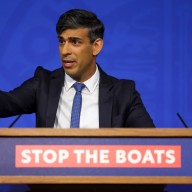For many Canadians, the biggest environmental shock in recent decades came with the collapse of the Atlantic fishery. And while seafood remains plentiful across the country, a lot of consumers still worry they’re contributing to making a bad situation worse.
A recent World Wildlife Fund-Canada study found that 91 per cent of Canadians feel it is important that their fish, shrimp and lobster come from sustainable, non-overfished stocks. By contrast, only eight per cent felt they had adequate information about where their seafood comes from.
“It’s gratifying that the message is out there,” says Robert Rangeley, VP Atlantic for WWF-Canada. “Canadians are concerned.”
The good news? Sustainable seafood exists – and availability is on the rise.
“The most basic thing is that we’re not overfishing the stock,” Rangeley explains. “If you buy cod, haddock or lobster, sustainability means the population of that species can continue to be harvested in the method being used in perpetuity.”
Consumers can identify these products with a logo from the Marine Stewardship Council, a stylized blue logo incorporating a checkmark and a fish.
“Part of the problem we’re facing right now is availability,” he adds. “If you see the MSC logo – that’s the blue checkmark – that’s pretty clear. Unfortunately, not all packagers put the checkmark on. We’re trying to solve this problem to ensure that everything that a consumer buys is verified.”
MSC and WWF are about to get some high-powered Canadian retail help.
“Loblaw has made a public commitment to only source sustainable seafood by 2013. That will remove a lot of the guesswork for consumers.”
Sustainable seafood doesn’t come from any one country. Canadian fisheries are recovering, but blue-checkmark packages can originate from many diverse and different nations.
“We still have a long way to go in terms of the health of our oceans – not just in Canada, but around the world,” Rangeley notes. “Part of the goal here is to reward best practices. We want to improve the ways our fisheries are managed, and reward best practices through the marketplace.”
Slow and steady progress, in other words – with consumers playing a crucial role in ensuring the sustainability of a vital resource.
“It’s like turning a great big ugly ship that’s going the wrong way towards a rocky reef,” Rangeley concludes. “Our goal at WWF is to work around the world with leading retailers and processors, and turn this thing around.”
More info: http://blog.wwf.ca/tag/sustainable-seafood/
















